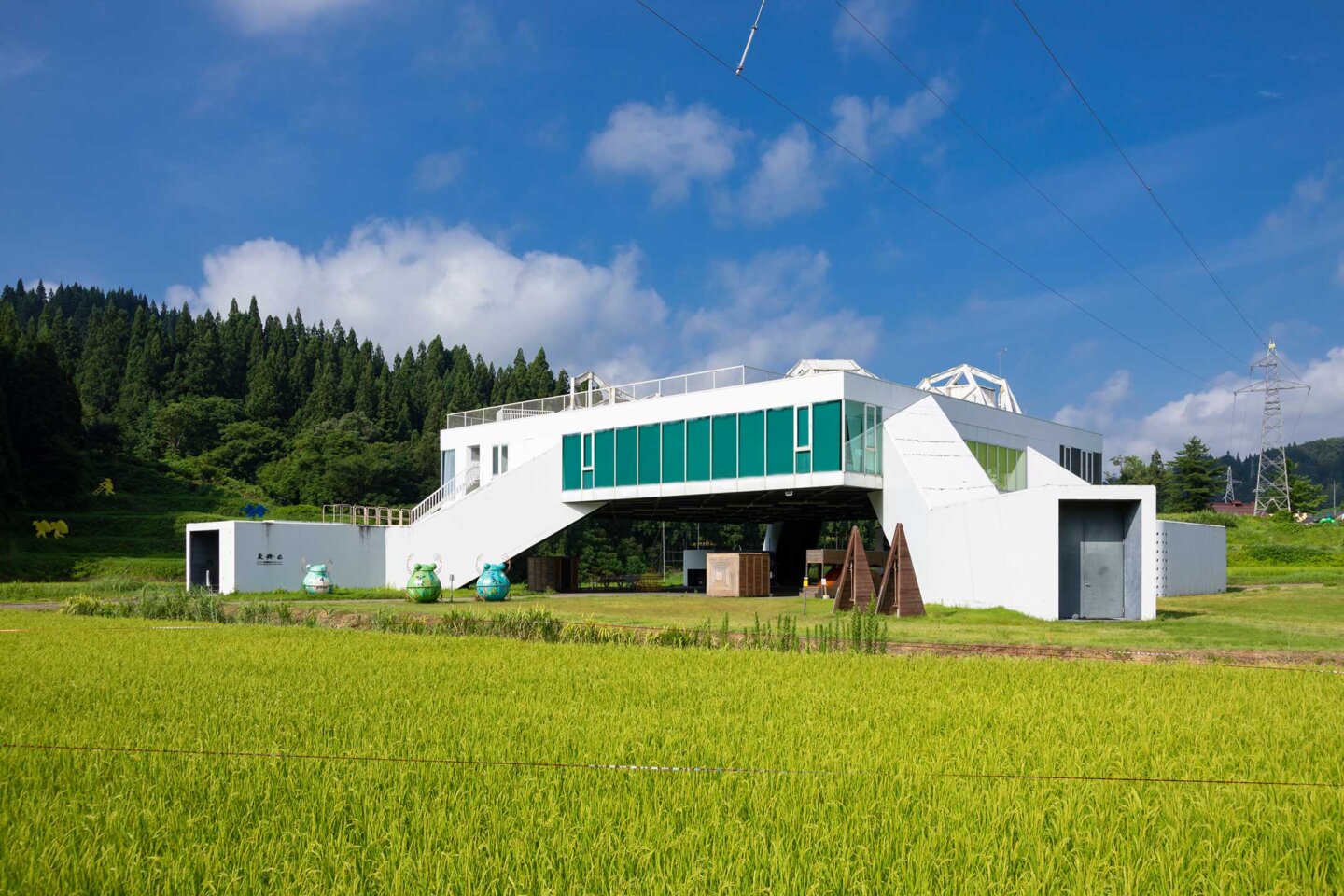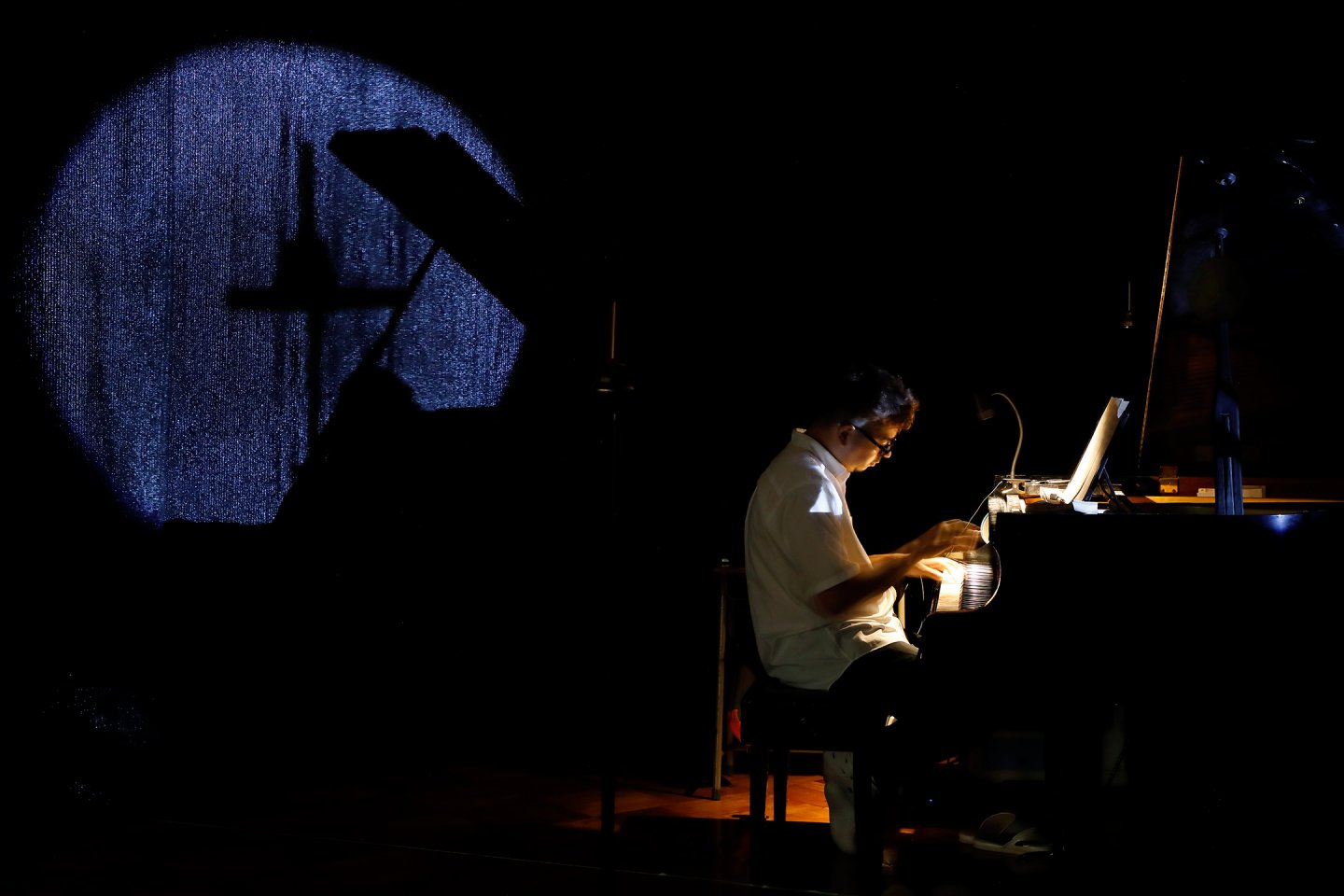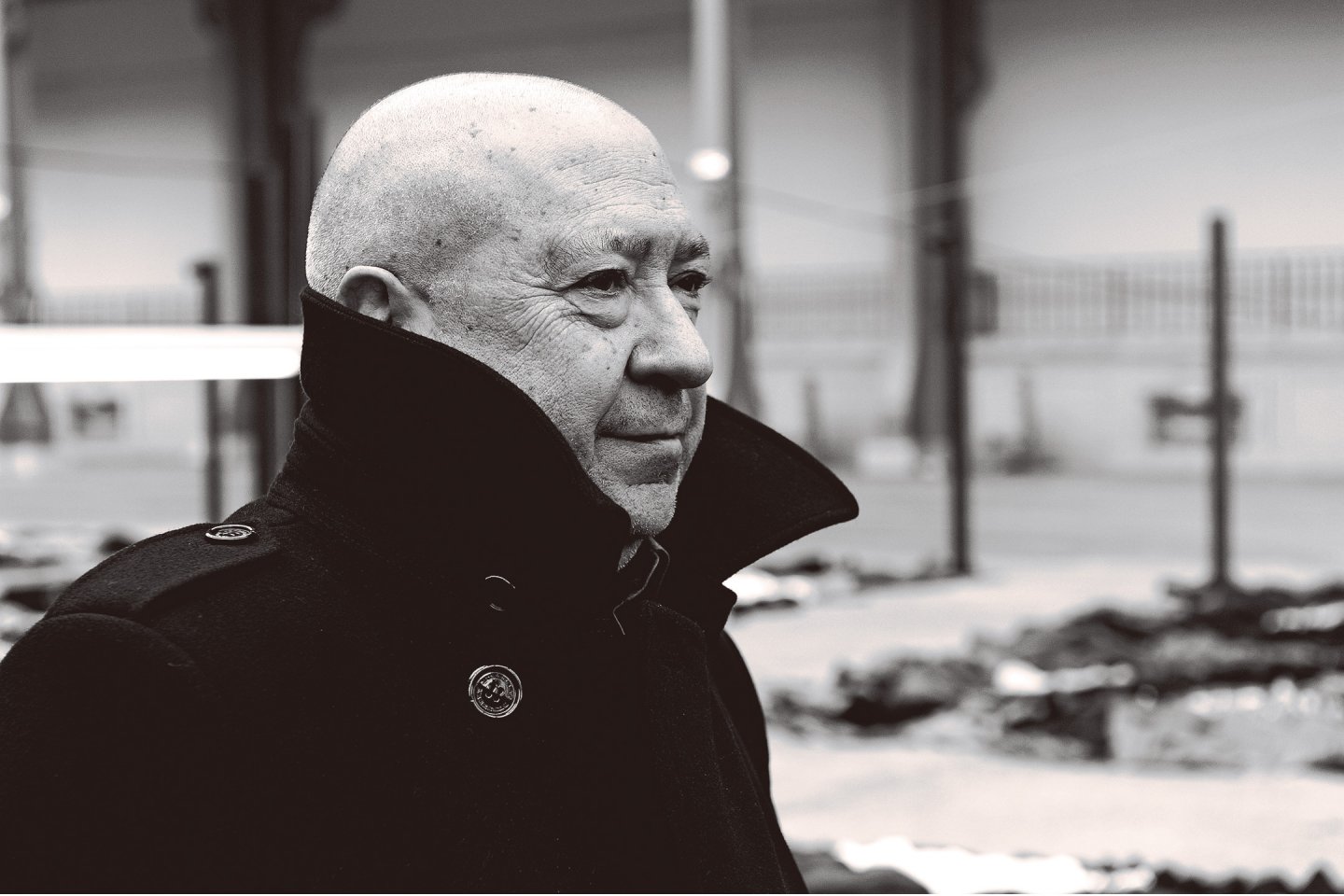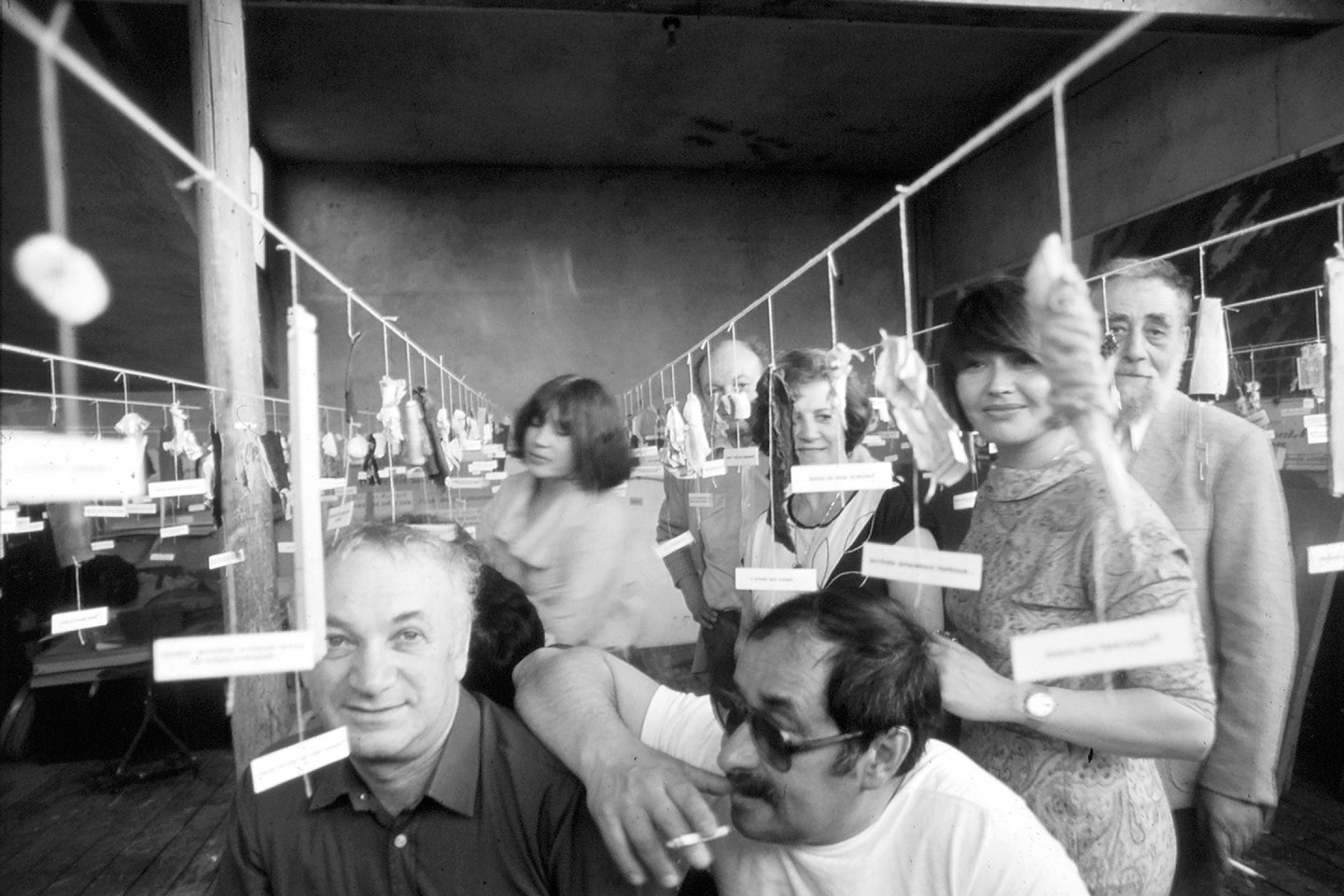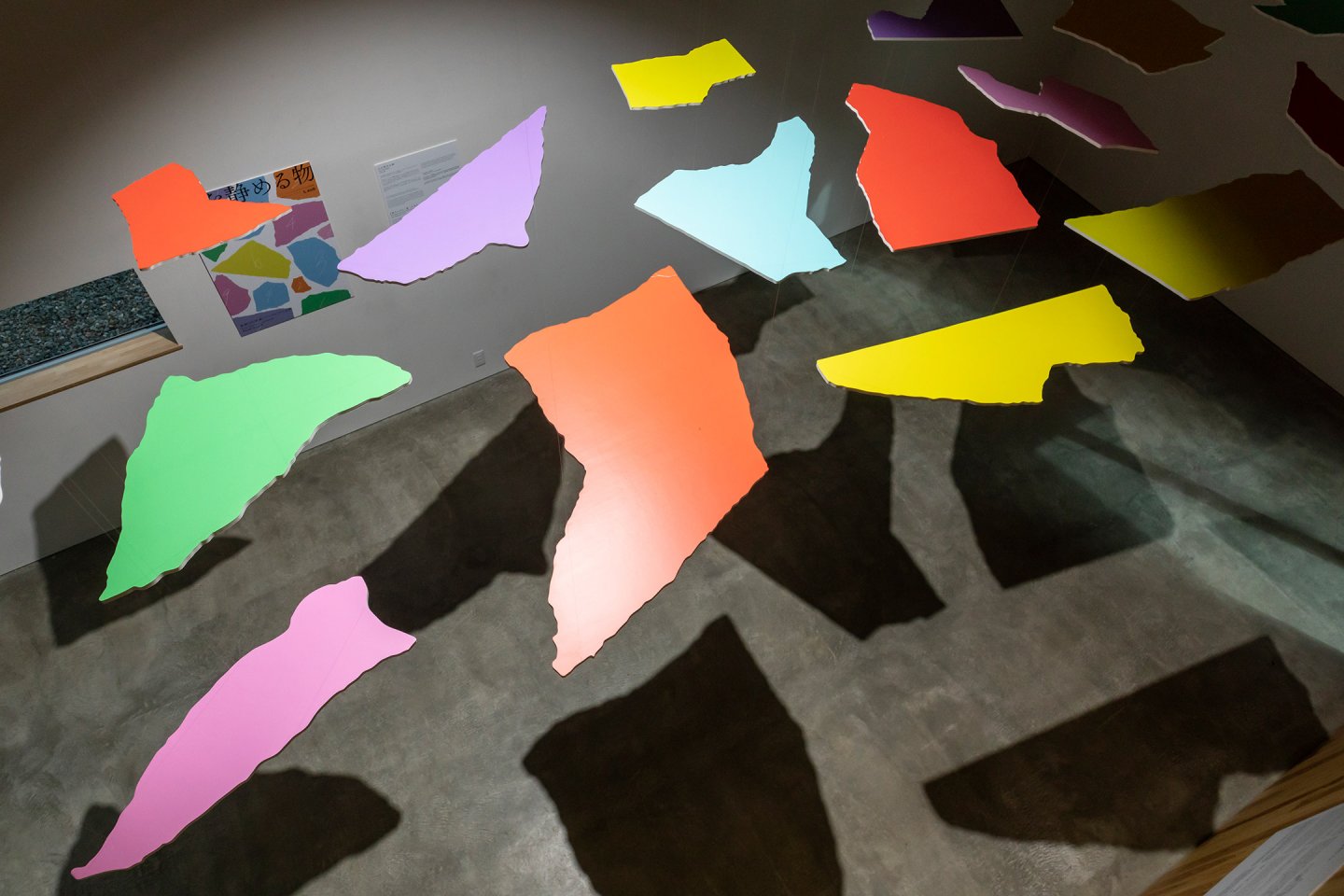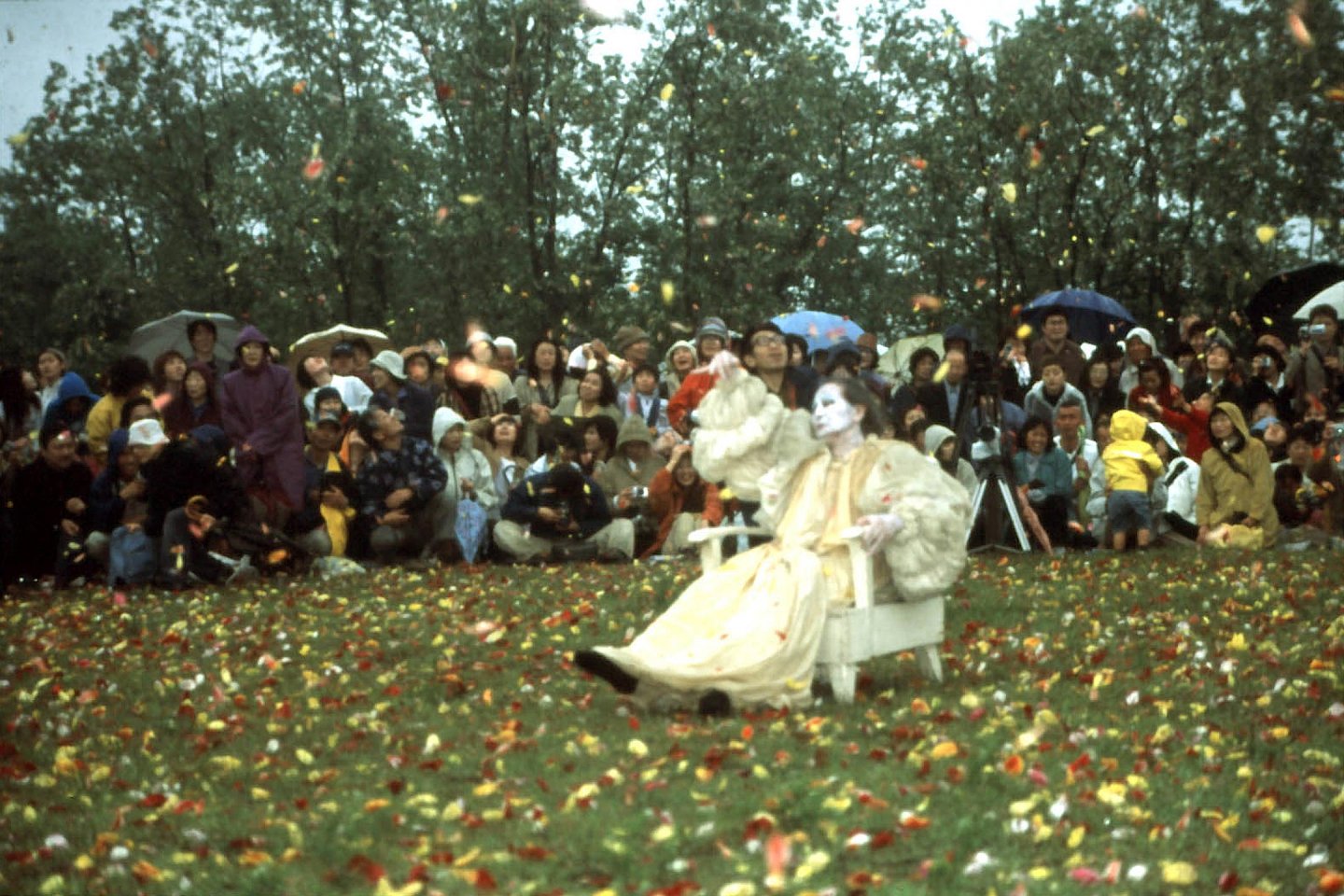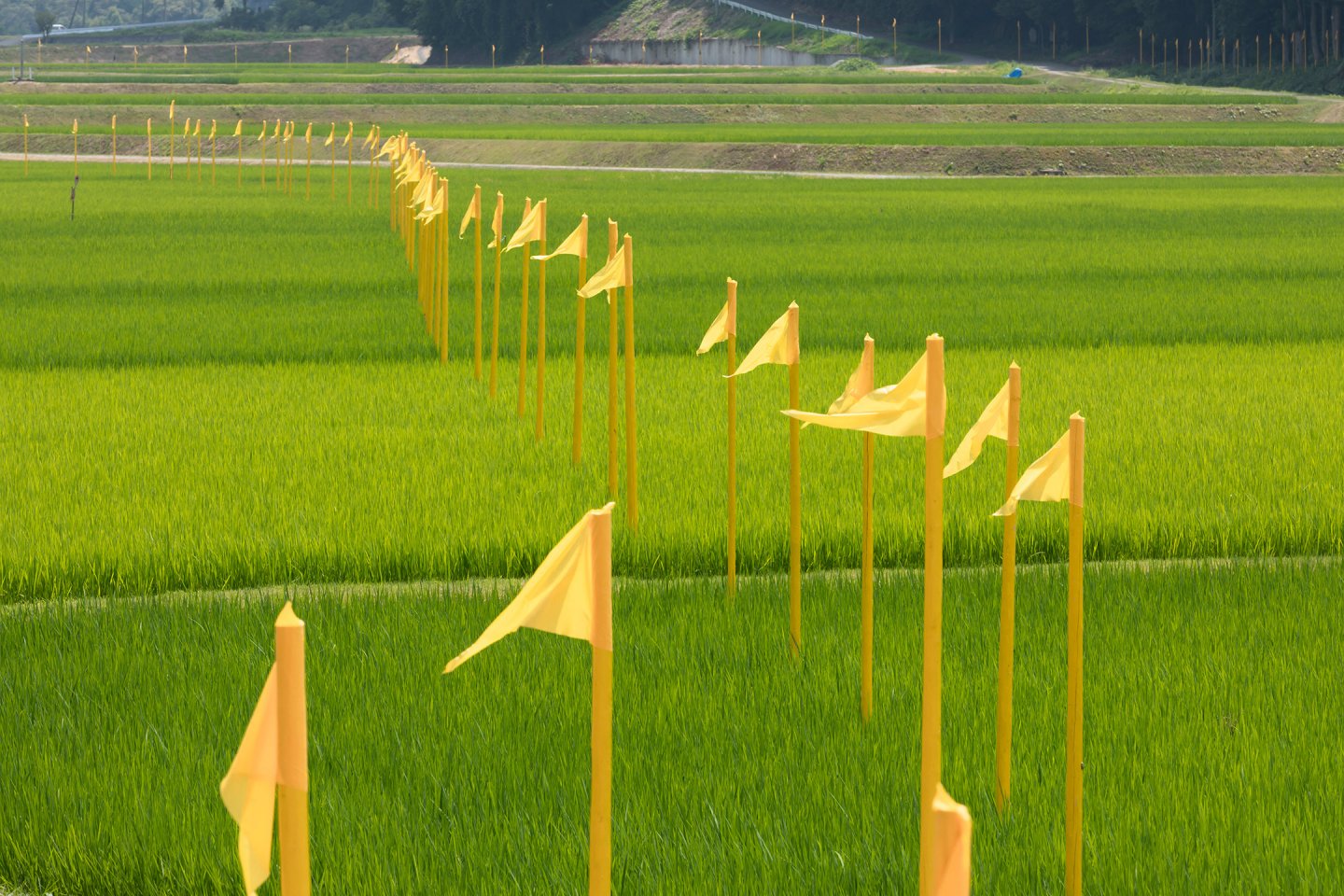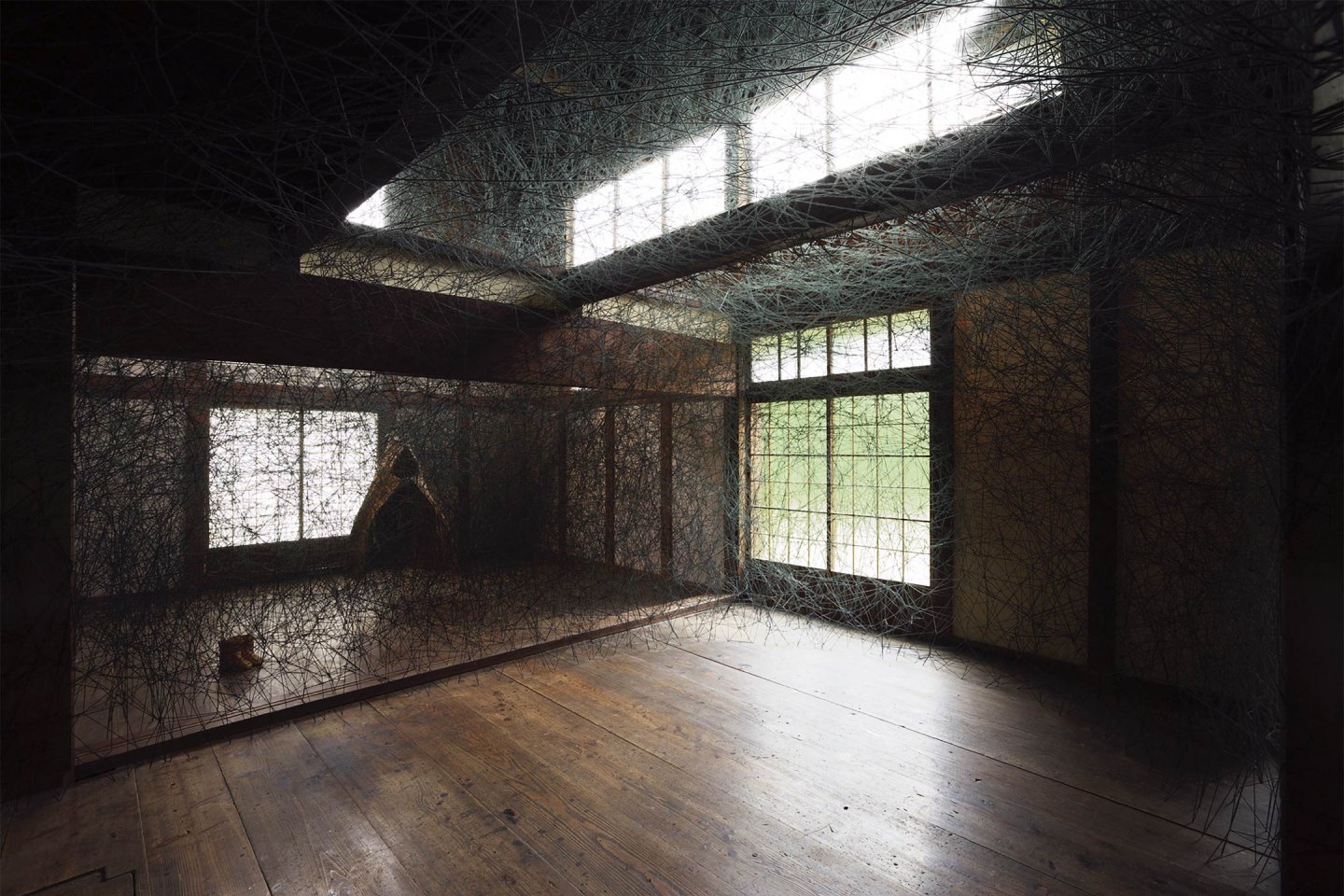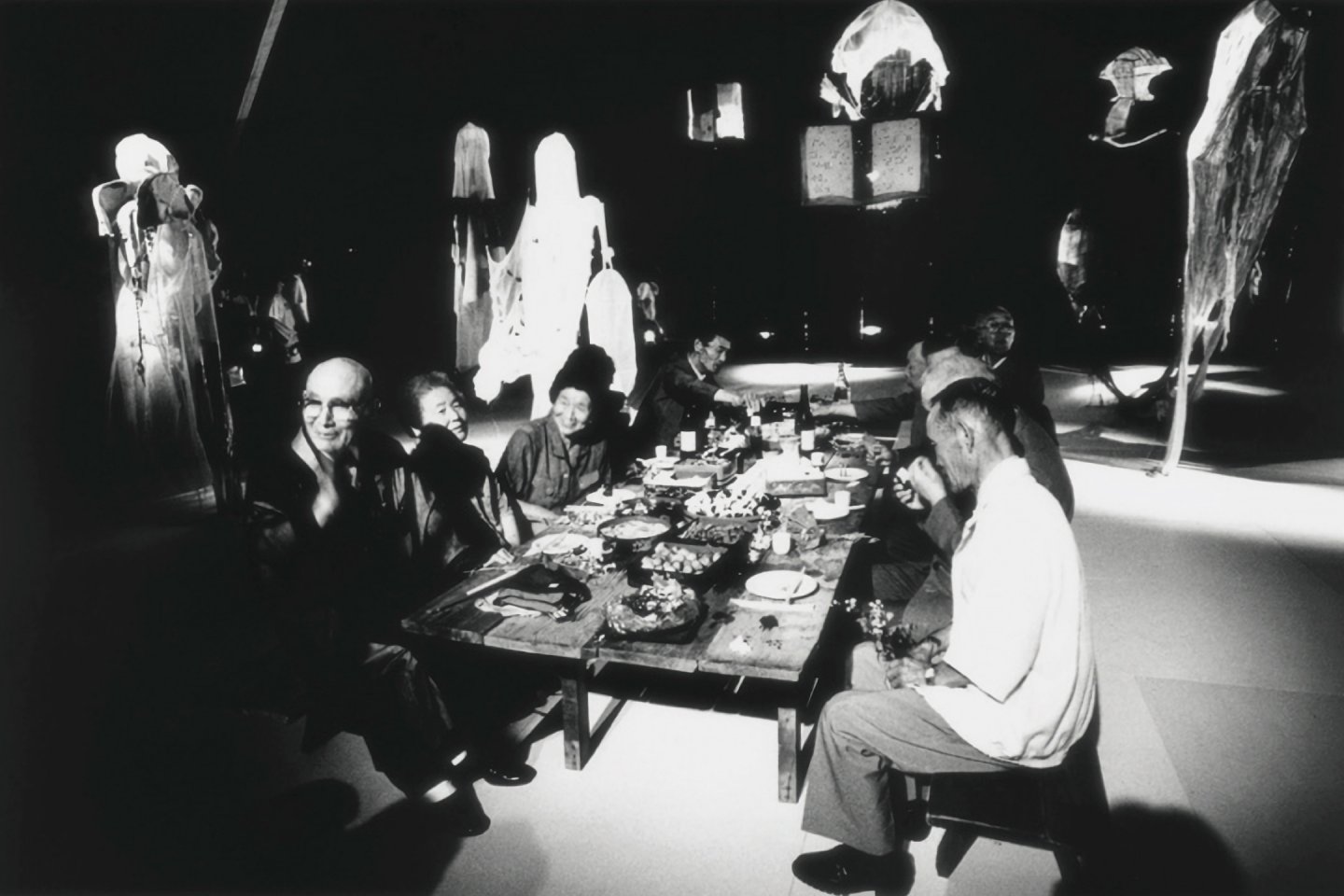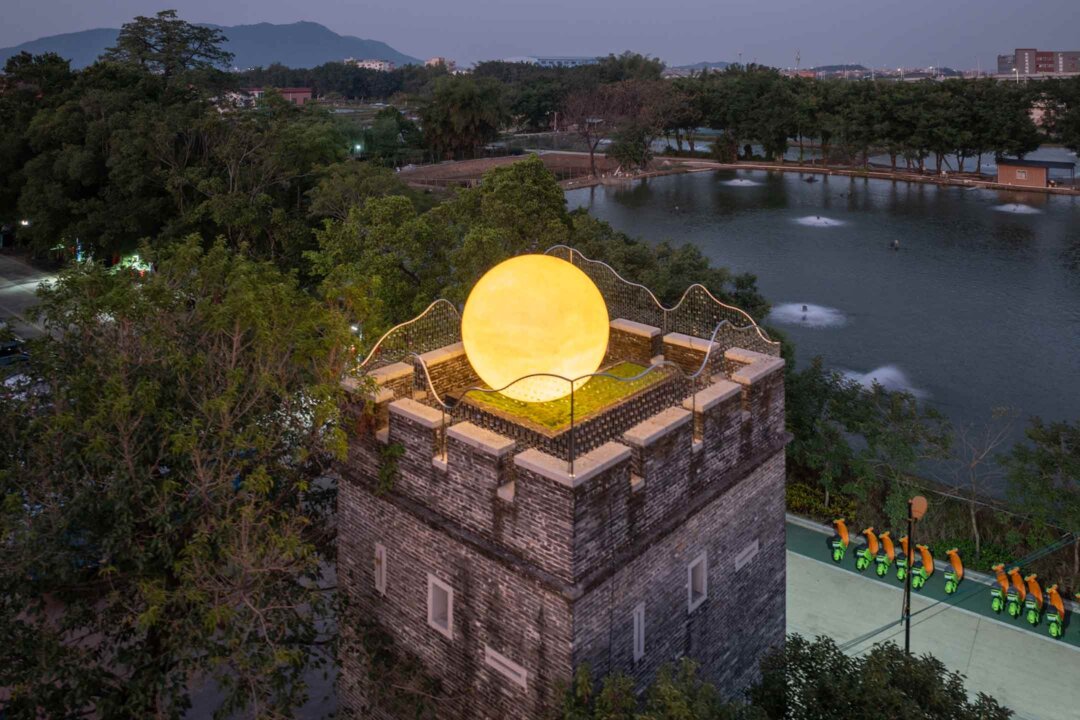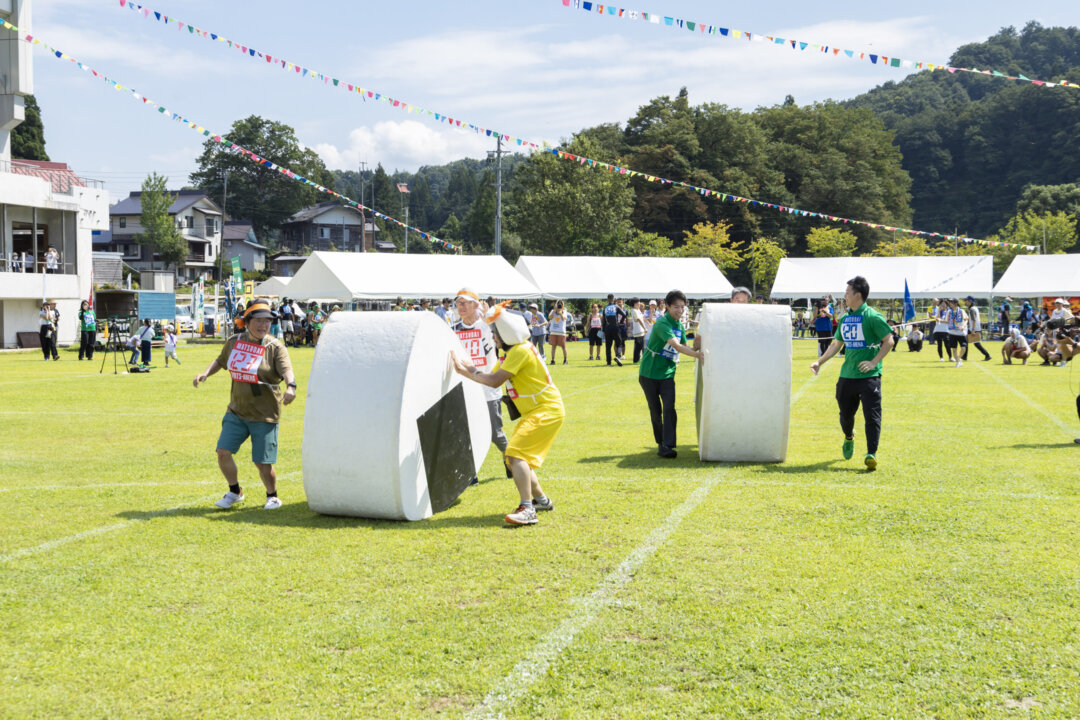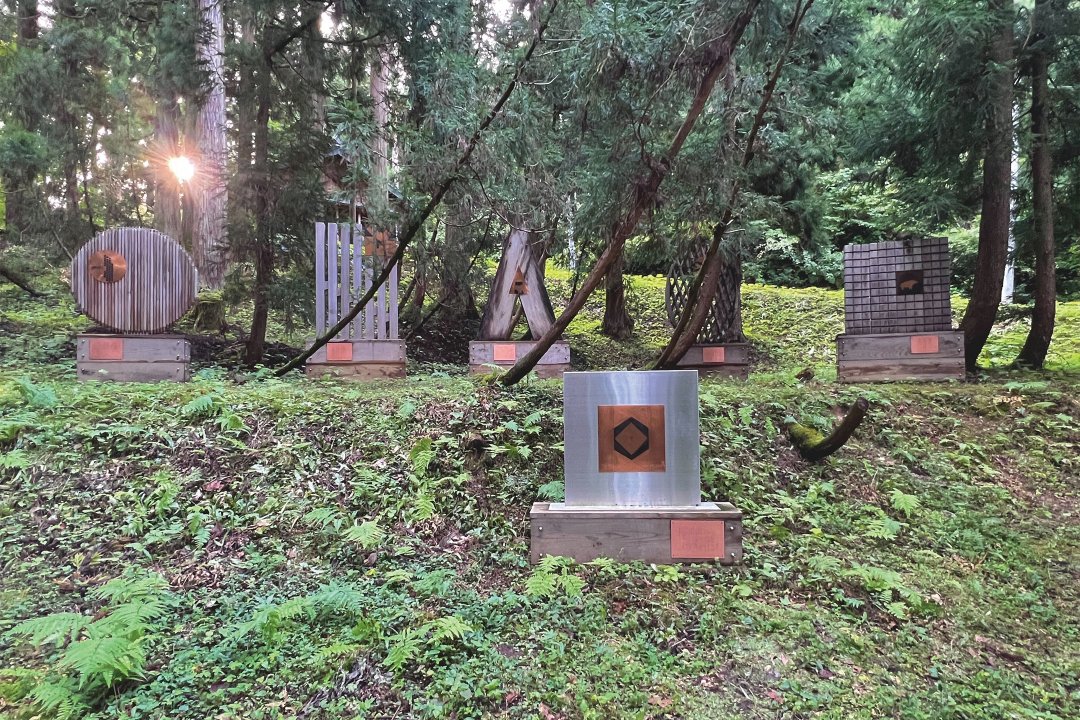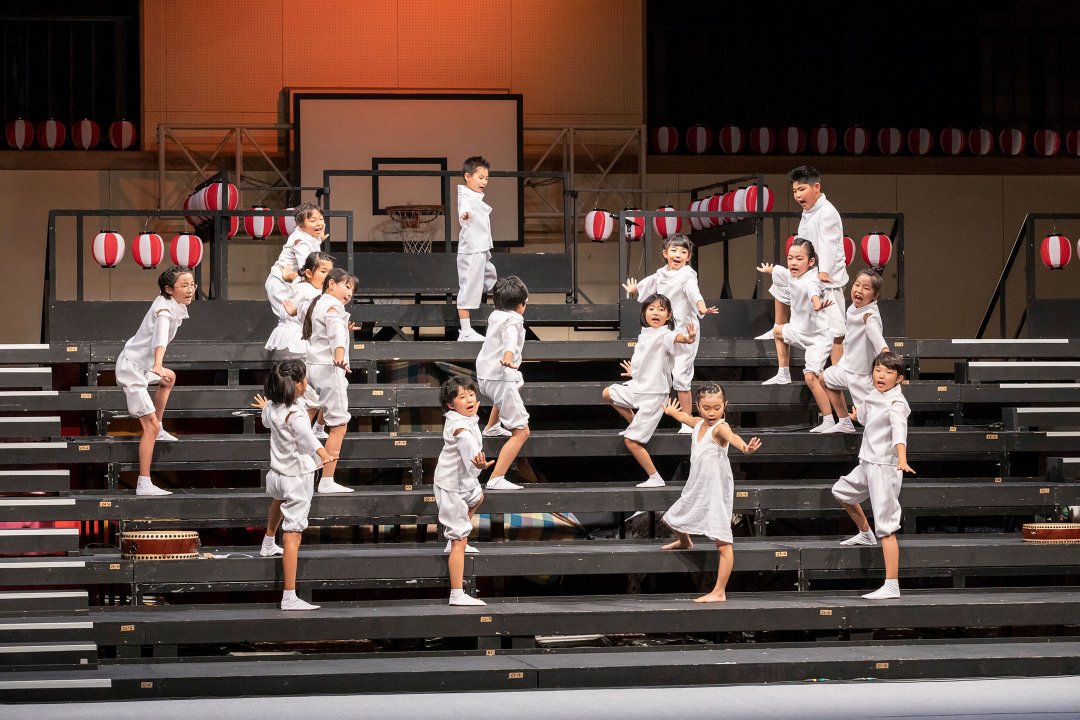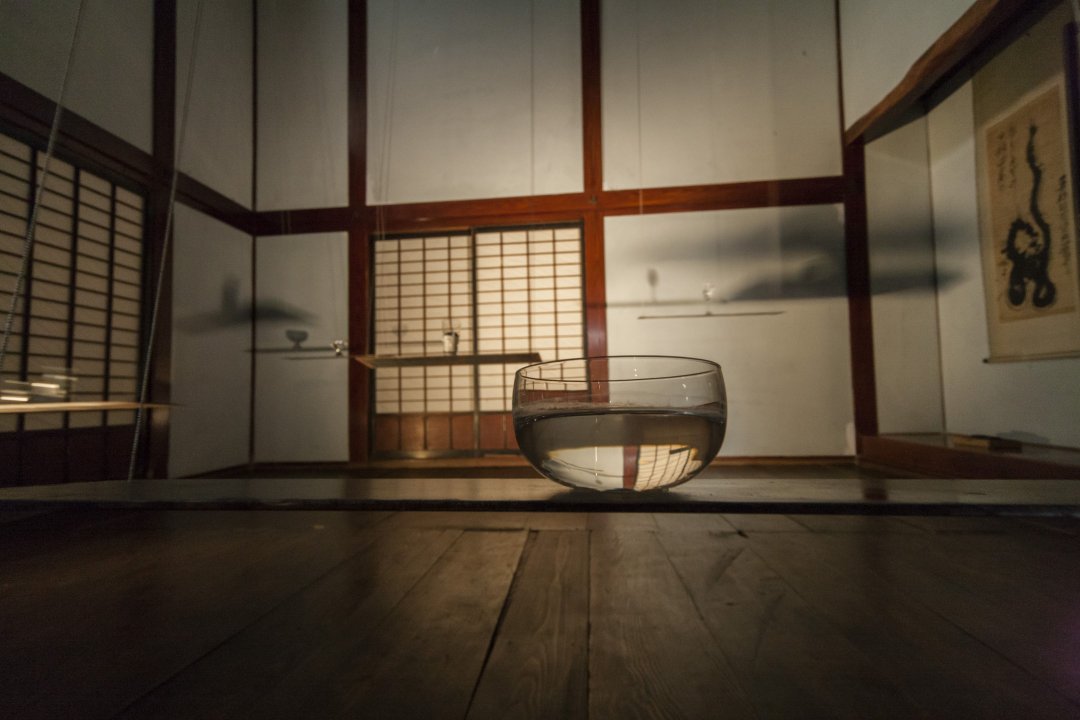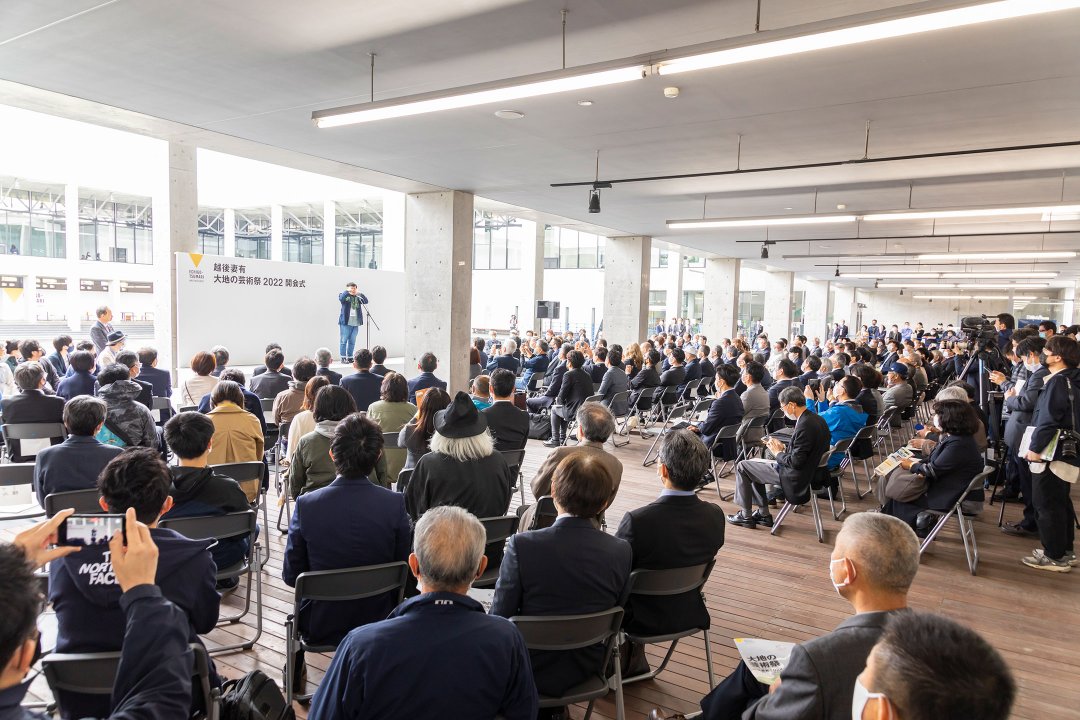Thinking 21st century art in the world from Niigata
Echigo-Tsumari Art Field - Official Web Magazine
Artwork /
To the Dead, to the Living (2000)
To the Dead, to the Living (2000) by
Yoshio Kitayama (Photo by ANZAI)
Artwork /
To the Dead, to the Living (2000)
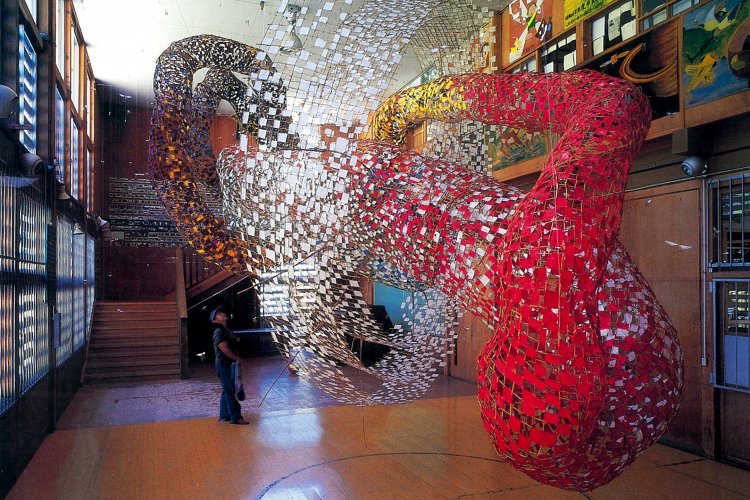
To the Dead, to the Living (2000) by
Yoshio Kitayama (Photo by ANZAI)
Knowing it would be dismantled, the work was born and is still said to be a masterpiece that no longer exists.
Text and edit by UCHIDA Shinichi / Edit by KAWAURA Kei (CINRA.NET editorial team) / Translated by Miwa Worrall
10 January 2020
The installation of life, death and memories created by the artist who secluded himself in heavy snowfall region for three months.
“To the Dead, to the Living” is a large-scale installation presented during the first iteration of Echigo-Tsumari Art Triennale. The artist, Yoshio Kitayama (1), visited Echigo-Tsumari in the peak of winter, shut himself in a closed school for three months and completed the work.
The site for the installation was Tsuchikura Branch School of the Kiyotsukyo Elementary School. The school stood in the area known for the heaviest snowfall in the region where children gathered, grew up and graduated. While it had a long history since its establishment in 1882, the Tsuchikura Branch School was closed in 1996.
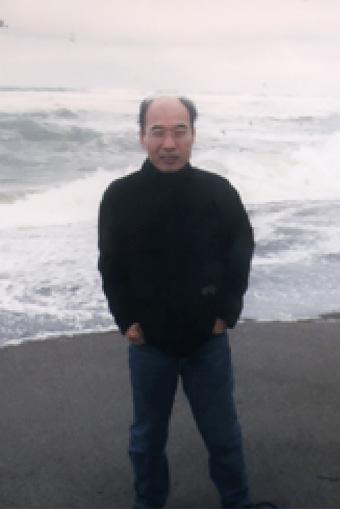
1: About Artist: Yoshio Kitayama
Born in 1948 in Shiga. Currently lives in Kyoto. He suffered a serious illness when he was ten years old and started to work in the dyeing and weaving industry after graduating from junior high school. However, he relapsed into illness again at the age of eighteen which led him to pursue an artistic career focusing on “life and death”, a compelling and personal theme. He was selected to represent Japan for the 40th Venice Biennale in 1982 and received attention for a large-scale sculpture made of bamboo and paper. Since then he has been continuing to explore various approaches to create his works.
What was displayed in the lecture hall and gymnasium space that filled with sunlight on sunny days was a room-sized swirling object that also looked like spreading ripples. He carefully assembled countless number of split bamboo (take higo) and pasted pieces of paper in different colours on the structure that produced a universe-like surging dynamism. In addition, miniature chairs with wings were hung aloft from the ceiling like myriad angels.
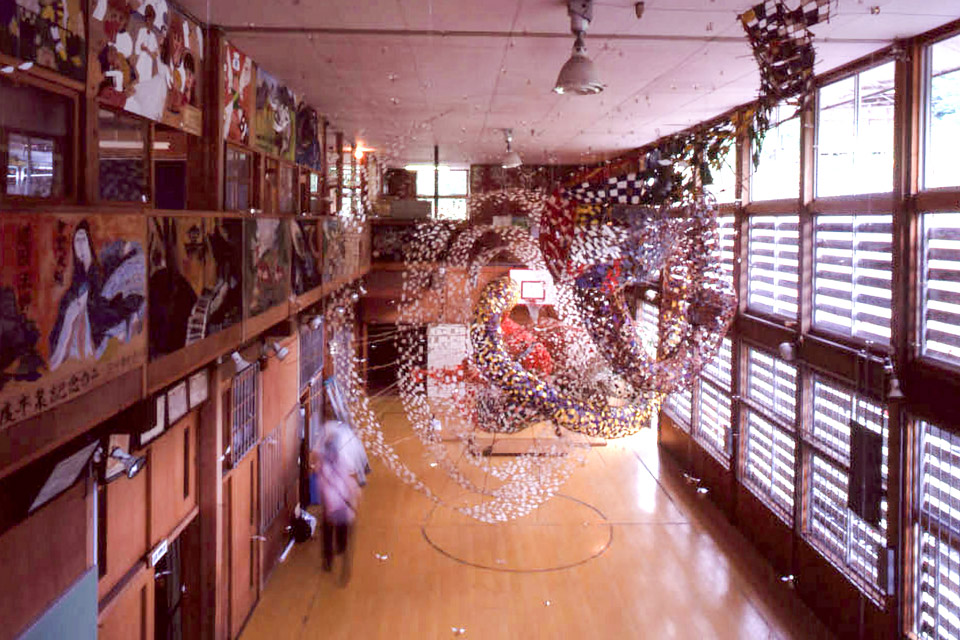
An object that reminded us of the universe appeared in the place where the village children once gathered, grew and graduated.
The wall along the staircase leading up to the upper floor was filled with photos of children who spent memorable times at the school. Poems by students from the collection of compositions including farewell addresses and their responses were written on the blackboard in the three classrooms looking down the lecture hall. On the other hand, drawings by Kitayama and cut-outs from newspapers and hand-written notes about “death” that he had collected for long time were also on display. Such contrasts invite us to consider the meaning of the title of the work, “to the dead, to the living”. A pair of wings stretched out from the outer wall of the building, as if indicating that the place was connected to the world outside.
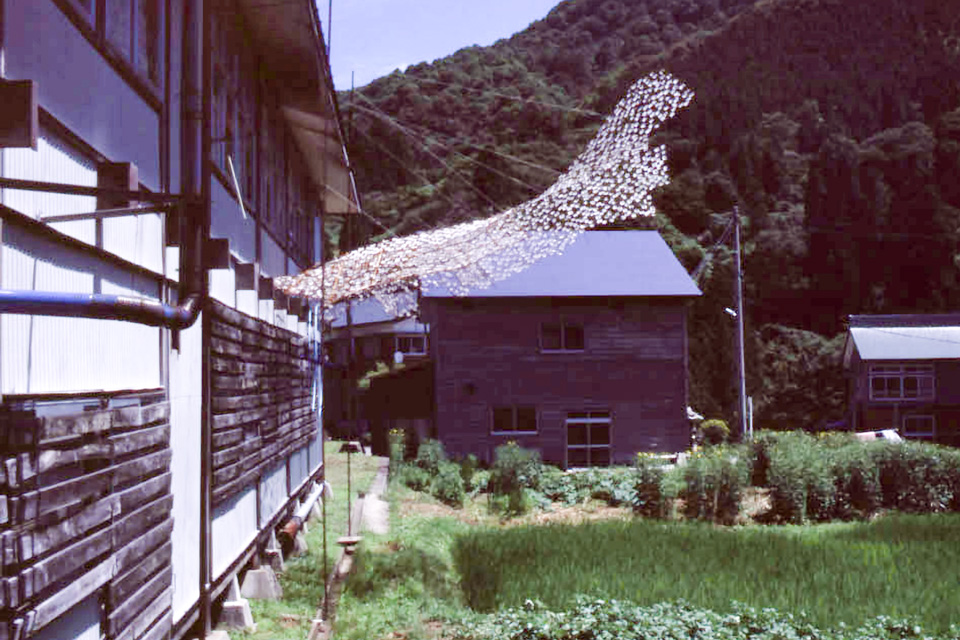
To the Dead, to the Living (2000) by Yoshio Kitayama (Photo by ANZAI)
A pair of wings stretched out from the outer wall of the building, as if to indicate that the place was connected to the world outside.
A story relates to the work that makes us wonder about “disappearance and birth”.
The work not only created a space filled with recollections and memories of the school but also expressed a universal viewpoint of life and death that was beyond a simple nostalgia. As it was located in the deep mountains, the number of visitors at the beginning of the festival was only a few a day. The road that led to the venue was too narrow for a bus to take visitors and staff members gave a lift for visitors from the closest parking point. As its reputation spread over time, cars of those who were visiting the work waited in a long queue during the latter half of the festival.
To the Dead, to the Living (2000) by Yoshio Kitayama 2000/2017, The work was re-created for the ETAT masterpieces encore: Spring 2017 at Echigo-Tsumari Satoyama Museum of Contemporary Art, KINARE (photo by ETAT).
It was already decided to demolish the Branch School when the festival came to an end and the artist agreed to create the work under such condition. Although there are works across the Echigo-Tsumari region that have been kept as permanent collections, we regret we don’t have the original piece for this one. However, as it has been talked about over and over, the work was re-produced by the artist himself for ETAT – masterpieces encore: Spring 2017. What has happened to the work is quite interesting as we deepen our perspective on birth and disappearance that is embedded in this work.
To the Dead, to the Living (2000/2017) by Yoshio Kitayama, ETAT masterpieces encore: Spring 2017 (photo by Osamu Nakamura)
To the Dead, to the Living (2000/2017) by Yoshio Kitayama ETAT masterpieces encore: Spring 2017 (photo by Osamu Nakamura)
To the Dead, to the Living (2000/2017) by Yoshio Kitayama ETAT masterpieces encore: Spring 2017 (photo by Osamu Nakamura)
The main campus of the former Kiyotsukyo Elementary School had been transformed into Yukihisa Isobe Memorial Echigo-Tsumari Kiyotsu Soko Museum of Art (SoKo) (2). The SoKo shows Yukihisa Isobe’s works as part of its permanent collections while at the same time functioning as a gallery and storage for large-scale works of contemporary art.

Yukihisa Isobe Memorial Echigo-Tsumari Kiyotsu Soko Museum of Art (SoKo)
(Photo by Sotaro Yamamoto)

2. The gymnasium space of former Kiyotsukyo Elementary School was renovated into a place under a new concept of presenting artworks while storing them. It opened its doors to the public in 2015. Under the agenda of facilitating exchanges of art between city and region, it is a constructive attempt to propose to artists in the city who don’t have enough space to store their large-scale works in Echigo-Tsumari which has been experiencing an increasing number of closed schools and abandoned houses. The renewal of the school building was also conducted in order to display as its permanent collection works by Yukihisa Isobe, the artist who has played an important role in building the foundation of the festival.
Yukihisa Isobe Memorial Echigo-Tsumari Kiyotsu Soko Museum of Art (SoKo)
If it is now, I would make every effort to preserve it. This work means that much to me.
Fram Kitagawa (“Art from the Land” editor-in-chief / ETAT General Director)
What I felt when I saw “To the Dead, To the Living” by Yoshio Kitayama for the first time was that it was an expression that would never have happened in a white cube (a completely white and abstract space). The original proposal for the work was not like this at the start. In particular, I would imagine that the idea of bringing photos and the collection of compositions that were once part of the school into the work must have occured to Kitayama as he discovered them during the course of production. He must have attempted to bring back the atmosphere of the school to this place. “Ah this is it. I somehow understood” said local people who saw the completed work.
Wonderful artworks that represent various senses of “time” are not that unusual amongst works created for ETAT. It relates to the fact that there are lots of old things with distinctive histories left in this region. To my regret, we couldn’t keep this particular work as the building was demolished after the festival. While we all understood that was the condition, I have to admit that we didn’t have enough resources then. If it is now, I would make every effort to keep the work. This work means that much to me.
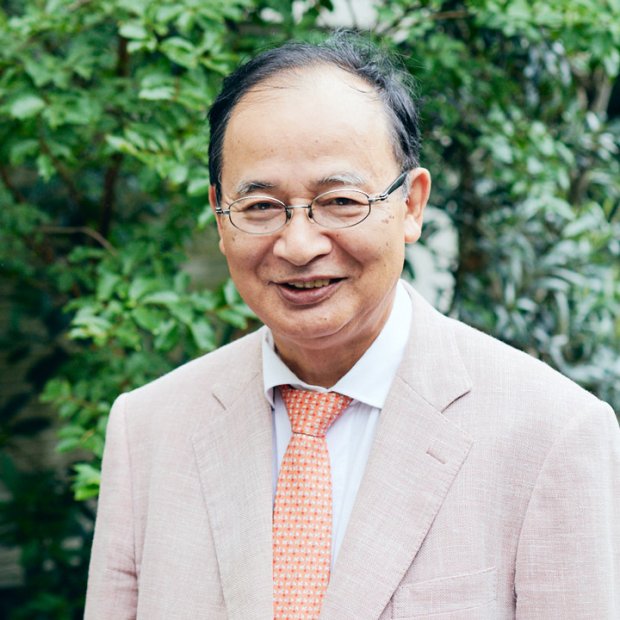
Profile
Fram Kitagawa
“Art from the Land” editor-in-chief / ETAT General Director
Art director, born in 1946 in Takada-city (current Joetsu-city), Niigata, Japan. Since the preparation, he had been engaged with ETAT which as General Director which was launched in 2000.






